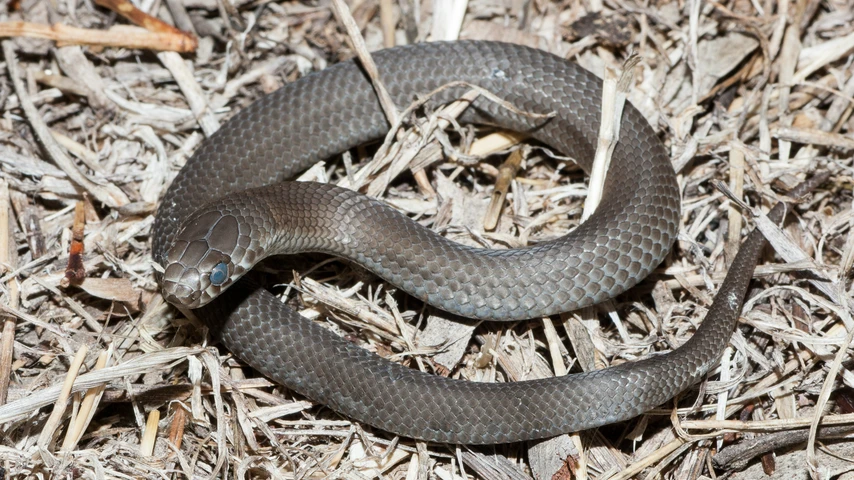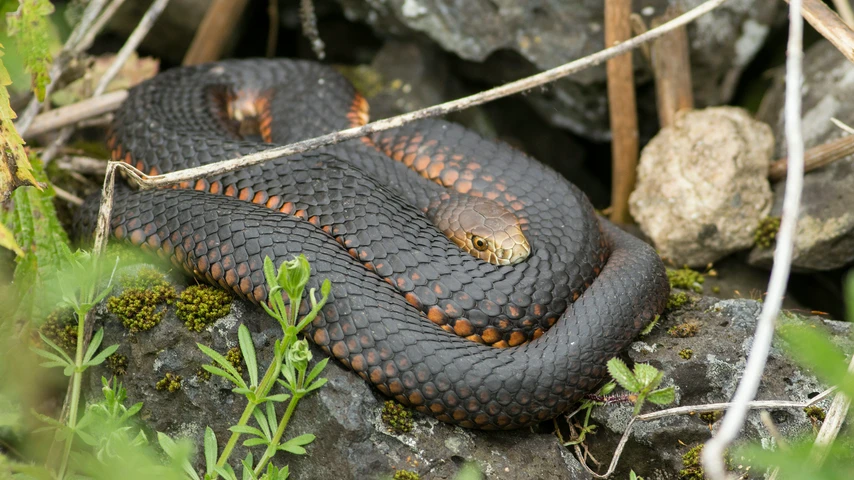Snake Facts: The Australian Copperhead Snake


Unlike most Australian snake species, Copperheads can thrive in some of the country's coldest and wettest regions.
There are 3 known species of Copperheads:
Though Copperheads (like most snakes) are secretive and do not seek out humans, they are highly venomous snakes that can cause human fatalities.
This article will help you understand what Copperheads look like, where they tend to live, how to treat their bites, and how to avoid snake bites altogether.
We also cover snake bites in our general and childcare first aid courses. To find and enrol at a training location near you, please head to our website.
All three species of Copperhead snakes have similar identifying characteristics:
They do, however, differ in their total length:
Australian copperheads belong to the Elapidae family of snakes. As such, they are not closely related to the American copperhead, which belongs to the viper family.

All three species of Copperhead snakes are generally restricted to colder environments in south-eastern parts of Australia:
The Pygmy copperhead snake (Austrelaps labialis) is only found east of Adelaide in the Mount Lofty Ranges and on Kangaroo Island.
In the Mount Lofty Ranges, they generally only inhabit high altitude forest. On Kangaroo Island, however, they can be encountered in a wide range of habitats, including:
In these habitats, they tend to shelter in or under matted vegetation, flat stones, and fallen timber.
The Lowlands copperhead (Austrelaps superbus) can be found in lowland areas of south-eastern South Australia, southern Victoria, Tasmania, and the islands of Bass Strait.
They are often encountered in close proximity to marshes, creeks, streams, and other water sources in grasslands, heathland, woodlands, and open scrub.
They can also thrive in heavily disturbed areas, where they occur near dams, canals, and along the verges of roads.
Lowland copperheads tend to shelter in or under:
The Highland copperhead snake (Austrelaps ramsayi) can be found in the highlands of New South Wales and eastern Victoria.
Here, they occur in woodland and open forest, as well as disturbed areas that have been cleared for grazing and other agriculture.
Like their Lowland counterpart, Highland copperheads usually shelter near water sources in or under:
Copperhead snakes tend to feed on cold-blooded prey like insects, frogs, lizards, and other snakes.
They are mostly active during the day and on the ground, though they will occasionally climb to bask in sunlight.
Male Copperheads engage in combat upon the start of the breeding season, during which they intertwine their bodies.

Copperhead snakes are generally secretive and prefer to avoid humans.
If cornered, they will usually not bite in the first instance, but will instead hiss loudly, flatten their body, and thrash about.
Further provocation, however, could cause them to lash out and bite. Their venom is highly toxic to nerve cells, red blood cells, and other living cells, and so their bites should be treated as a medical emergency:
Though Copperheads are considered dangerous snakes, it is important to remember - snakes will never go out of their way to attack you.
The best way to avoid a snake bite is to refrain from approaching, capturing, or killing any snakes at home or in the wild. If you need a snake relocated from your property, contact a professional snake catcher.
For hands-on experience with identifying, treating, and preventing bites from Australian copperheads and other snakes, enrol in one of our general or childcare first aid courses.
We have training locations in every state, capital city, and major town throughout Australia.
Head to our website to find and enrol at a training location near you today.

March 11, 2025
Darwin, the tropical capital of Australia’s Northern Territory, is home to a rich diversity of wildlife - including an impressive array of spiders. From the sprawling webs of golden orb-weavers to the cryptic camouflage of trapdoor spiders, these arachnids play a vital role in the local ecosystem. While some may inspire fear, the majority are harmless and even beneficial, helping to control insect populations.

September 4, 2024
Cat bites, while often underestimated, can lead to serious health complications if not treated promptly and properly. Cats' mouths harbour a variety of bacteria that can cause infections in humans.

April 1, 2024
Encounters with wildlife can often be thrilling, but when it comes to the creature known as the drop bear, the experience can quickly turn dangerous. A sharp increase in recent attacks prompts the need for understanding proper first aid procedures in case of an attack.